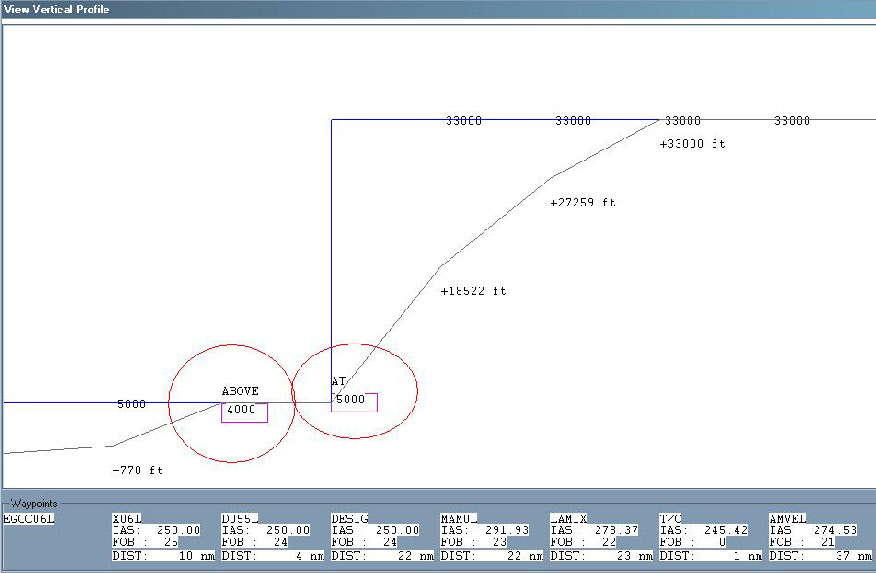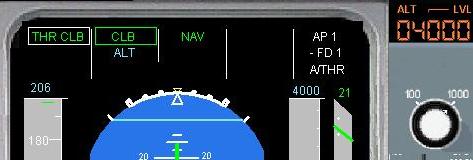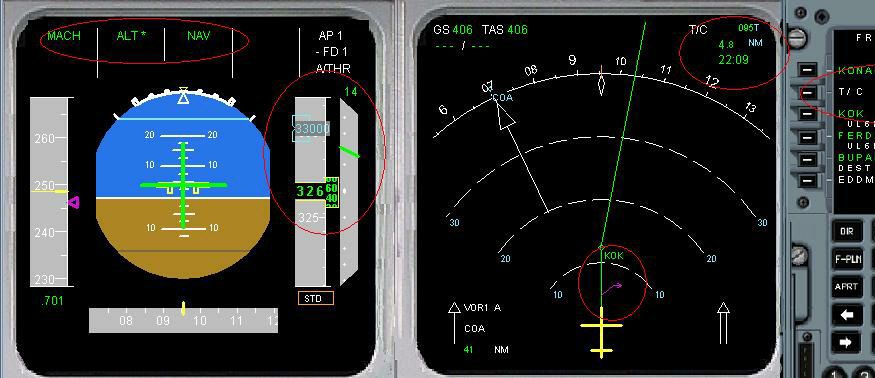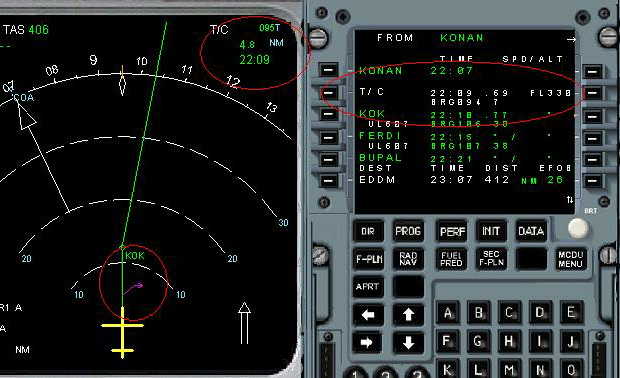Climb

During the climb the FMGS always acquires an altitude given by the FCU. So if ATC
clearance has only given an intermediate altitude, then the FMGS will climb the aircraft
to that FCU altitude, since the FCU altitude is always the ATC cleared altitude.
There may be some intermediate altitude constraints during the climb. These will
be shown on the MCDU as altitudes with an star next to them. On the ND they show
up as magenta circled waypoints if the CNSTR button is pressed on the Nav panel.
An FMGS altitude constraint will be used during the climb. These constraints are
typically at or above, or at altitude constraints. If an At constraint altitude occurs
during the climb the FMGS will level off at that altitude until the next unconstrained
waypoint
The climb phase starts at the acceleration altitude. At this point in the flight
path, the aircraft is guided to the next target altitude ( which may be the FCU altitude
or a MCDU constraint altitude) in the CLB mode. The A/THR system sets the climb thrust.
The climb phase will end when the aircraft has reached the cruise altitude. This
will occur when passing the Top Of Climb waypoint (T/C).


If the FCU altitude is above the FMGS constrained altitude ( eg FCU alt = 9000 ft and DESIG constraint = 5000 ft), then the armed mode of ALT will be shown as magenta. If the FCU alt is at the constraint alt or below, then the armed mode of ALT will be shown in blue
In our example there is a constraint to be above 4000 ft at D055L and to be at 5000 ft at DESIG. Thus during the climb, the aircraft will level out at 5000 ft and resume the climb again after DESIG

When the aircraft reaches the cruise altitude it should be at the pseudo waypoint of T/C. The FMGS will enter into altitude acquire and a speed or mach mode. At this point the cruise flight phase begins




Next
Previous





